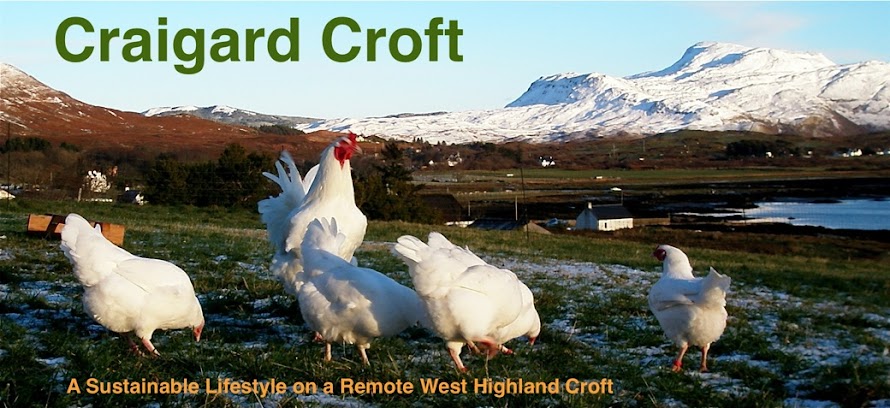 |
| Calf hutch field shelter |
Goats aren't as hardy as sheep. A sheep's fleece stays warm when wet and its thick and windproof. Domestic goats are covered with hair that doesn't have the same weatherproof properties if they are subject to cold wind and rain they are susceptible to pneumonia so they need a shelter.
Feral goats are more weather proof because they have a layer of cashmere underneath the outer guard hairs. This is analogous to the "warm when wet" merino wool underpants sold to walkers and mountaineers and not a suitable subject for after dinner conversation.
Cold on its own isn't a problem goats have central heating, the ruminant digestive system. In the wild they find a cave to shelter and sleep in, years of dung build up on the floor provides a well insulated bed and they are really comfortable. Toggenburgs are probably the hardiest of the domestic goats, in summer they can stay out 24hrs a day if they have a shelter.
We have fixed steel rings to the top of the shelter at each corner so that it can be tied down to the mountain side. I don't want to have to fetch it back from my neighbours croft or the village.
Observant readers will have noticed that the goat on the left isn't a Toggenburg. It's "Pia" the British Toggenburg she belongs to Dale, is 18 months old and in kid.
The field shelter is based on a Canadian plan for a plywood calf hutch. Many dairy farmers rear calves outdoors in portable boxes like this, it is much healthier reducing the incidence of scour and pneumonia. It should be fine for goats if it doesn't blow away.










